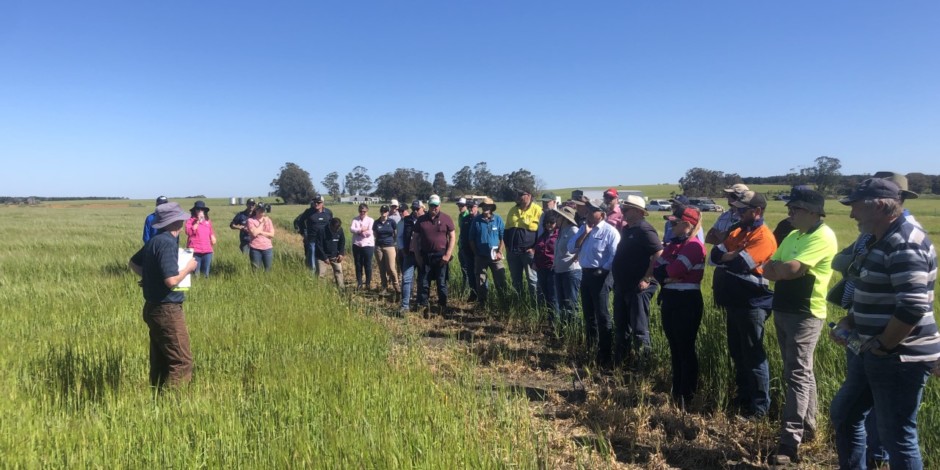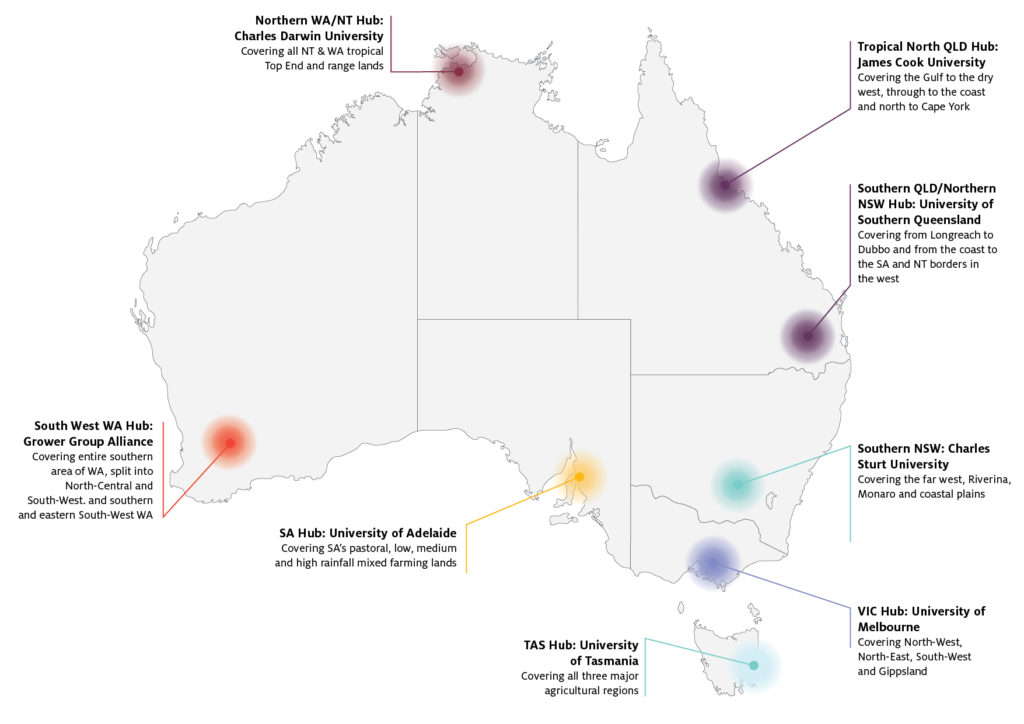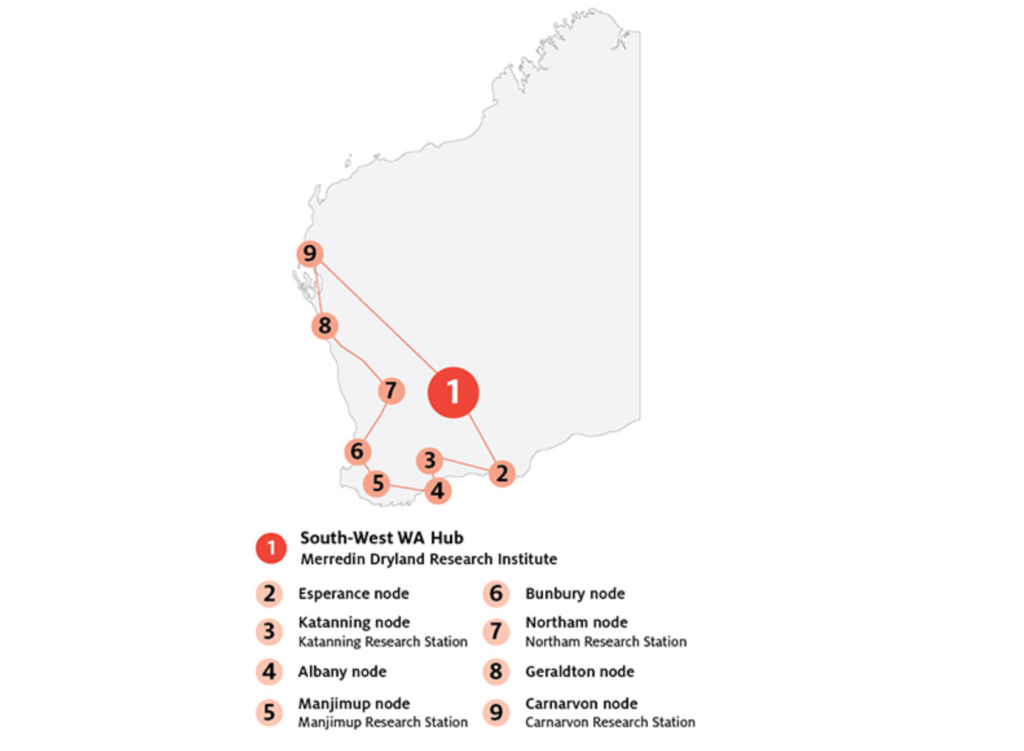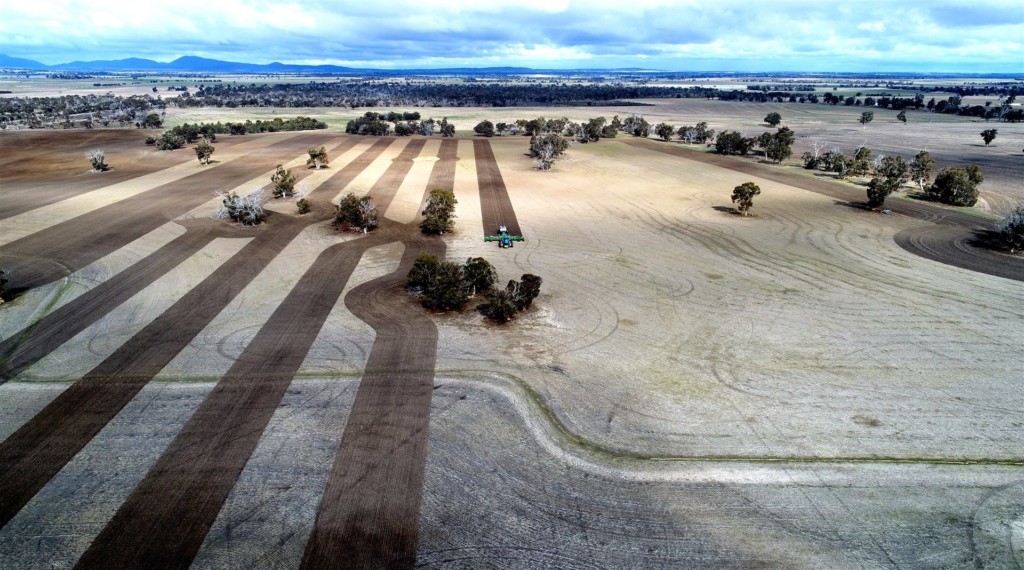New WA Hub seeks innovative solutions to drought
Growers will be at the forefront of innovation with the launch of the South-West WA Drought Resilience Adoption and Innovation Hub, designed to help manage climate variability and increase productivity on-farm through innovative technologies and grassroots collaboration.

Agricultural producers across South-West WA have been invited to contribute fresh strategies to transform the way their rural communities respond to drought, through a new Drought Resilience Adoption and Innovation Hub.
Financed from the Australian Government’s $5 billion Future Drought Fund, the South-West WA Hub’s key location is at the Department of Primary Industries and Regional Development’s (DPIRD) Merredin Dryland Research Institute.
It’s one of eight hubs across Australia designed to encourage collaboration between researchers, primary producers, community groups and others to boost drought resilience.

Nathan Dovey, Chief Executive of the Stirlings to Coast Farmers group based at Albany, said having secure funding for the next four years should stimulate plenty of innovative ideas from local farming communities that can be acted on quickly.
The Government initially contributed $8 million over four years but in October 2021, pledged an additional $2.5m over 18 months to enable the SW WA Hub to expand its remit to agricultural innovation more broadly. Hub partners will provide co-contributions worth several million dollars.
“As one of the Hub stakeholders, we really want to tap into farmers’ ideas. While there’s not a simple solution or one single strategy, I think they’ll come up with the best ideas to mitigate drought and drought-like conditions,” said Nathan.
“Our 200+ members are generally in a high rainfall zone but everybody gets affected by drought at some stage. 2020 was very stressful because the season didn’t break until early August and crops were nearly dead before it rained and ended up being quite a reasonable cropping year with average yields and above-average prices.
“This year it hasn’t stopped raining, with some farms measuring 750-800mm! To cope with that extreme climate variability, we’ve increased our focus on trials and projects using a range of ag technologies that can improve our drought resilience.”
RELATED: Agritech resurgence sparks excitement in Western Australia
Hub nodes are to be established in areas that may include Carnarvon, Geraldton, Northam, Bunbury, Manjimup, Albany, Katanning and Esperance, covering the key industries of grain, sheep, beef, dairy, viticulture and horticulture.
Another coup for WA is that the local Grower Group Alliance (GGA) was chosen to manage the SW WA Hub, making it the only hub in Australia led by a rural producer body. The others are university-led.

“It’s great news and testament to the strength of GGA’s extensive grower group network and 18-year track record of delivering projects that make a practical difference on the ground,” said newly appointed SW WA Hub Director, Tom Davidson, who was previously Head of Strategy & Digital at the ASX200 listed agribusiness, Elders Limited.
RELATED: ‘The time is now’: Key insights from Elders CEO Mark Allison
“We’ve already started a process of pretty extensive prioritisation and consultation with more than 55 consortium members and partners from universities, the state agriculture department (DPIRD), grower groups and agribusinesses, to analyse what’s been done before and where the Hub should focus its efforts.”
Variable rainfall for WA growers, calls for agritech solutions
Tom said the Australian Government investment is timely since WA growers are experiencing a variability in the weather that they haven’t seen before. Cropping and livestock areas previously considered ‘safe’ for rainfall are now more marginal.
RELATED: The art of growing red meat market access
“Since 1970, the winter rainfall which is key to our cropping season has generally fallen by around 20% and since 2000 this decline has increased to about 28%, so that’s a significant drop,” explained Tom.

“The Hub’s core focus is to bring everyone together. We’ve always had a very sophisticated and innovative farming sector in WA and there is a younger cohort now picking up the baton from older farmers, who are still finding new solutions.
“The last round of Future Drought Fund innovation grants attracted 35 to 40 applicants from the South-West WA region proposing a wide range of projects, from WaterSmart Farms, drought-resistant fodder and forage crops, and local knowledge and capability around utilising climate-adapted native shrubs.”
RELATED: National Soil Carbon Innovation Challenge
Agritech tools and industry collaboration geared to drive drought resilience
“People understand that when these tools are used cleverly, they can add value.”
Nathan said the Stirlings to Coast Farmers group continues to build resilience by disseminating the results of drought research through peer-to-peer learning.
A 12-month Water Use Efficiency trial funded by AgriFutures Australia is part of the group’s Producer Technology Uptake Program, using digital technologies to improve growers’ experience in managing weather variability and water use.
RELATED: Growing rice with less water and labour
“Members want better data on local climate conditions to produce more accurate weather forecasts. Our growing network has 31 weather stations, 42 digital rain gauges and 11 soil moisture probes installed to complement the public weather stations,” Nathan explained.
“We work with a company that integrates the information from the weather stations, rain gauges and soil moisture probes plus the public weather data from the Bureau of Meteorology and DPIRD, to provide hyper-local, real-time weather intelligence.”
Farmers to benefit from new cutting-edge extreme climate outlook maps!
▶️Drill down to your location to see chance of extreme #climate events
▶️ Unseasonal high/low temps & rainfall – weeks, months & seasons ahead💻 https://t.co/oYwnJq2V5J pic.twitter.com/NjbELkOBPG
— Bureau of Meteorology, Australia (@BOM_au) November 1, 2021
He said members are also opting to fund more research into livestock and pastures to increase overall farm productivity, as the ratio of cropping to livestock in the South-West shifts from 75:25 on the average 4,000-hectare farm to 60:40.
The group has secured funding from Meat & Livestock Australia to assess the economic benefits of confinement feeding for sheep, to optimise management and prevent erosion.
“In the MLA project we will work with three different farmers intensively in the first year, using animal nutritionists to optimise feed rations in confinement and ensure the condition scores of the ewes are optimal, so that we get maximum lambs on the ground.
RELATED: The launch of growAG. and Southern NSW Innovation Hub – CSU AgriPark
“We have pretty sandy, fragile soils, so it’s good to have the sheep off the paddocks in summer and autumn, when our soils are most susceptible to wind erosion,” said Nathan.
He sees a key challenge for the new South-West WA Drought Resilience Adoption and Innovation Hub as one that is common to the Stirlings to Coast Farmers group – communicating research results and general information.
RELATED: The new mindset driving Australian agrifood research
“Capturing their attention is a challenge because farmers are time-poor. We have our website and field walks for face-to-face contact, and this year we posted a series of videos online that included the data analysis, discussions and commentary from the farmers that hosted the trials.
“I think the challenge will be the same for the SW WA Drought Hub, but it’s a relief to know there’s going to be significant funding for the next four years to improve our resilience.”
Enjoyed this story? Want to learn more about the Asia Pacific region’s innovative agrifood tech ecosystem? Sign up for our newsletter here and receive fresh stories about global leaders, farmers, startups and innovators driving collaborative change.
